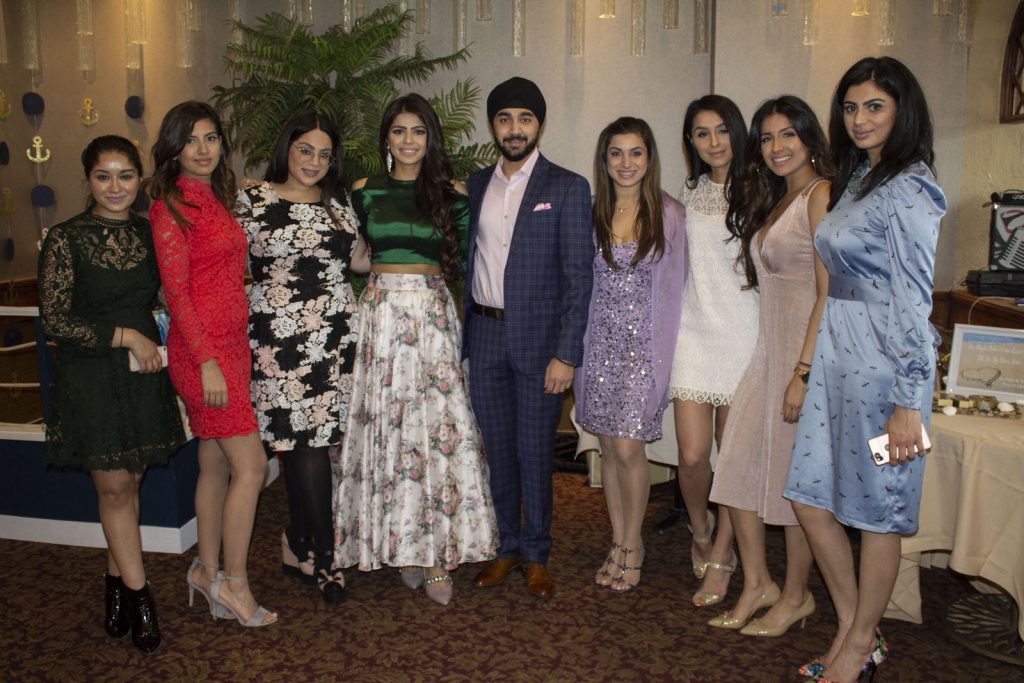Fusing 2 cultures!
My fiancé Karma is Gujarati (Indian) and I’m Trinidadian (Indo-Caribbean) so as you can imagine, there are some differences in culture there. And surprisingly for some, even though we’re both Hindu they are some subtle differences in the way we perform certain customs and ceremonies as well. Here are some tips that Karma and I used (and are still in the process of using) to ensure that we included both cultures equally when planning our wedding!
FIGURE OUT WHAT YOUR DIFFERENCES ARE
Before you do any planning, it’s really important to sit down with your fiancé and talk about what the cultural differences actually are. For example, Karma told me about how for their wedding ceremonies, they usually hold a sheet between the bride and the groom initially (so they can’t see each other) and then it’s removed after a certain ritual is done. I’d never seen that before at any of the Indo-Caribbean Hindu wedding’s I’ve been to! We decided against this, because I wanted him to see me walking down the aisle!
ASK OTHERS!
It’s important to make sure your fiancé isn’t the only person you ask. In my case, Karma was honest that that he didn’t really know many of the traditions or customs. We had been to a couple of weddings together, and he explained the differences between those and what he’s used to but, he admitted that he knew there were more differences. So, we also consulted our wedding planner (Susan from Beyoutiful Beginnings) as she specializes in fusion weddings and she pointed out some more differences to us. For example, after the Baraat she informed us that Indians tend to have food for guests before the bride comes in (which again was something I’d never seen before, food before the ceremony? Hell yea!). It was so helpful to have someone that had experience planning fusion weddings because she knew exactly what was expected from both sides. We went through things with her and decided what we wanted and what we could do without.
Of course, it’s also important to consult your parents! Aside from the religious traditions, there are many other customs that could vary. For example, my family places a lot of importance on doing an engagement pooja and Karma’s family doesn’t. They do however give certain gifts before the wedding, which were quite specific (gold, clothing, sweets) and they had to be given by specific people. So we decided to include the gift giving with our engagement pooja to mesh the two concepts together.
We also found out from our parents that there were certain customs that had to be done after the wedding ceremony as well. Most of these aren’t religious but it’s still important to find out what they are so both sides are included equally. They were simple things like what is given at the ceremony as gifts from either side, or small differences in customs done at the groom’s house when the bride is brought home. It’s so important to learn about what these traditions are on both sides and include them both, mixing families means mixing traditions – his traditions are becoming my traditions too and vice versa.
MAKE SURE YOUR PRIESTS MEET
After you discuss with your fiancé, wedding planner and parents, it’s so imperative that you go through all of the details with your priest (after all he’ll be the one carrying it all through!). It’s also a good idea to do this because it’s highly likely that the priests from either side have their own way of doing things as well – you want to make sure everyone is clear about this so there are no surprises (or arguments) on the day of! You’ll also need to decide: do you want a priest from both sides? Or just one priest? If it’s just one it’s important that they’re clear about the other sides rituals as well to make sure both sides are being equally represented.
PLAN OUT WHAT YOU NEED FOR THE CEREMONY POOJA AND MAKE A LIST
When you’re making your schedule for the wedding day, ensure there’s a list of all required materials for the pooja (from both sides) and the pre and post customs. Having this as a side note with your schedule is great This way you can ensure that nothing is forgotten for any part of your day! Again in this situation Karma and I are lucky that Susan (our planner) is the one responsible for all of our pooja and ritual related materials, so we don’t even need to worry on our day! She will pick up the pooja materials detailed by the priests the week of our wedding. Her and her team will also go to our respective houses on the morning of to ensure they’re not forgetting any materials/items (from either house) that need to be at the hall before they arrive to set up. Even if you don’t have a planner you can assign this task to someone, as well as making sure everything is detailed in your schedule notes. This is a great way to stay organized and make sure nothing is forgotten for the traditions of both sides.
MORE CULTURES = MORE FOOD!
Another great way to fuse your cultures is through food! (Yum!) There’s such a huge difference between Indian and Caribbean food, from the roti to the curries and everything in between. On top of that, Gujarati food is really specific as well! But it’s all so good we knew we wanted to find a way to include it all somewhere in our wedding. We decided the theme for our ceremony would be West India (Gujarat) meets West Indies (Trinidad). We also decided to separate our wedding on one day, with a small cultural reception and have our full reception be the next day. One of Karma’s favourite Indian snacks is Pav Bhaji and one of my favourite West Indian snacks is doubles, so we decided to have those both be the appetizers before our cultural dinner. For the dinner as well we wanted to include both types of food (we even did this at our engagement pooja and the guests loved all the options!) We’re including 4 Indian dishes (curries, naan, rice etc) and 4 West Indian dishes (curries, roti, rice etc) to be sure to include both types of food but also to show the difference versions of potatoes, daal, rice, bread etc that both cultures have!
This is a really easy way to include both cultures and it’s fun for your guests to try some food they’ve never had before! At our formal reception the next day is where we’re having our 5 course, western style food (salad, soup, pasta, cake etc). So we’re including our North American upbringing as well!
MORE IDEAS: INCLUDE TRADITIONS FROM BOTH CULTURES THROUGHOUT YOUR CEREMONY DAY
Karma and I love the difference our cultures have because they make our whole wedding so eclectic. For example, for his baraat we’re having a mix of dhol (Indian drum) and tassa (West Indian drum). We’re working in bright Indian colours into our decor with marigolds (well known Indian flower) and palm tree leaves (representative of the Caribbean). We are also including garba, a dance specific to Gujarat at our Hindu reception as well as a tassa performance where it’s typical that West Indians dance during the playing of the drums. Just some more ideas!
There are so many cute and interesting ways to fuse your cultures, you just have to take the time to to figure out your differences, talk to the right people and find creative ways to include them only our day! I hope these tips were helpful, we’re still working through some of them so I’ll be sure to update you all! See you in the next one 🙂
– Shivani xx





